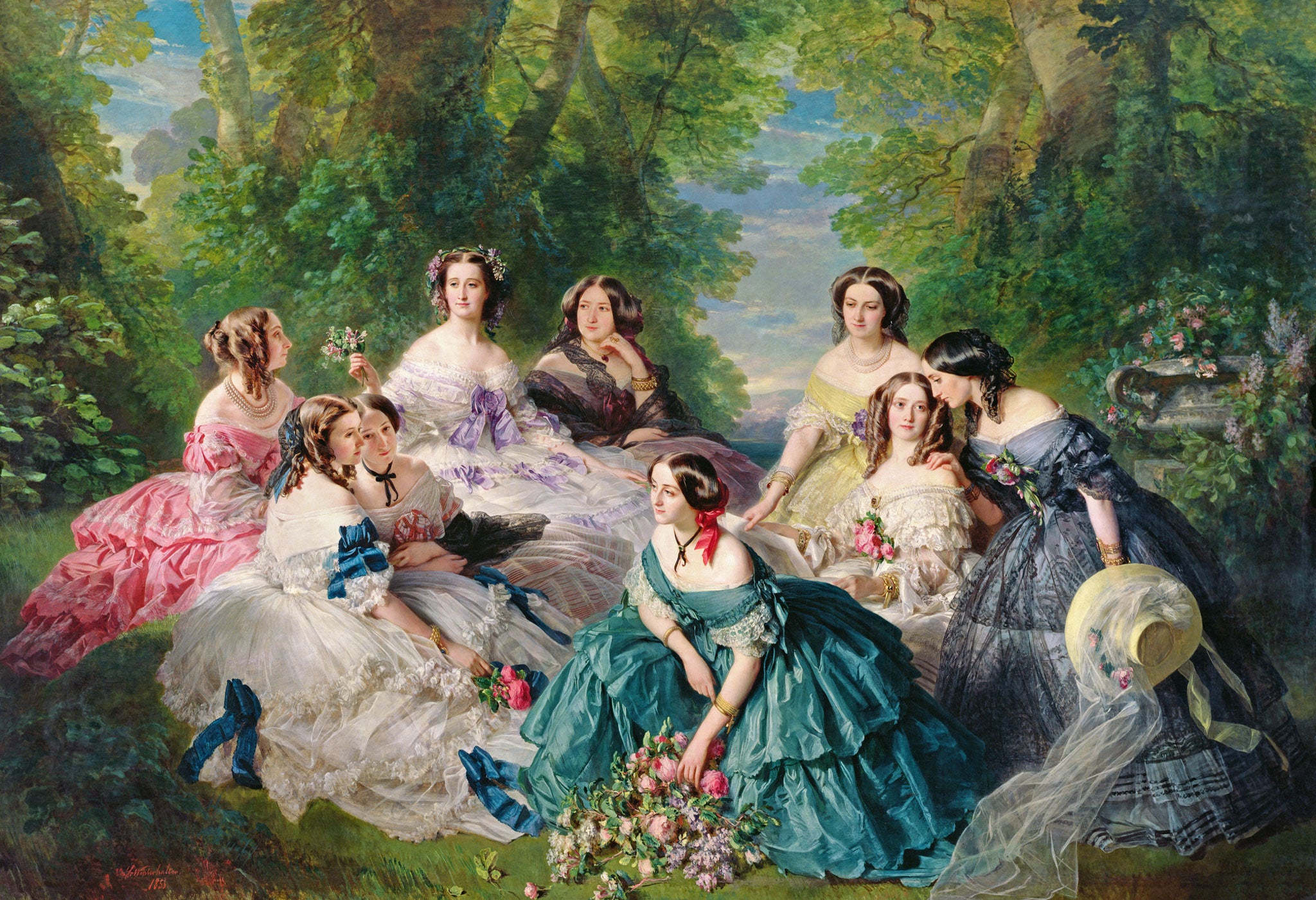Impress of an empress: The influence of Eugénie on luxury style is still felt today
Empress Eugénie's influence on fashion came very much from her far from ordinary life, says Alexander Fury

There's always a great woman inside great fashion. They tend to be inside rather than behind – by which I mean either within the fashion houses, working as anything from couturière down to les petites mains (the technicians, the 'little hands' that actually sew together those exceptional haute couture pieces), or inside the clothing itself. That's a role which is often underestimated. After all, fashion needs to live on a body.
Empress Eugénie's influence on fashion came very much from her life. Admittedly, it was no ordinary life. Born into Spanish nobility, Eugénie de Montijo first met 'prince-president' Louis-Napoleon at the Élysée Palace on 12 April, 1849. Four years and a coup d'état later, on 22 January 1853, the then-emperor Napoleon III announced his engagement. They married a mere week later, when she became Empress of the French (as luck would have it, the last).
What all that entailed, in fashion terms, was constant travelling – from Spain, to Suez, to Sri Lanka, and between the French court hubs of Paris, Compiègne and Biarritz – and constant outfit changes. In layman's terms, that means clothes. Lots of clothes. And, of course, lots of luggage. Luckily the luxury industry in Paris was booming under the second empire, a city being reshaped under its denizens' feet by Baron Haussmann.
Just as Haussmann rebuilt their city, Charles Frederick Worth began to rebuild their bodies. Worth opened his house in 1858. He didn't invent the crinoline, already well established by 1855, but he was its ultimate proponent, pushing it to extreme proportions by 1860. Eugénie was his willing accomplice. By 1868, they jointly agreed the crinoline was 'out', pricked it with a pin and pulled dresses snug around the hips, looped up into a bustle behind. In fashion terms, it was Worth's own coup d'état, but he could never have achieved it without Eugénie. She may have f dubbed Worth the "tyrant of fashion", but it was Eugénie who really held the power.
That's because, like Marie Antoinette before her, Eugénie reigned over fashion as well as France – indeed, under Eugénie's taste, the styles of Louis Seize were revived, and her court modelled on that of her predecessor. But Eugénie also learnt a few lessons from Antoinette's demise: mainly, that she was expected to lead the race in the fashion stakes without becoming its victim, and that she would be scrutinised at every turn.
Eugénie, however, looked forward, rather than back. The importance of Worth, for instance, wasn't so much his fashions, as what he did with them. He founded haute couture. However, he could only do so with the patronage of Eugénie, an empress certainly, but before even that an arbiter of fashion.
By the 1860s, publications as far afield as the Philadelphia-based fashion magazine Godey's Lady's Book were scouring Eugénie's fashion choices. She introduced colours – 'Empress blue' – and hairstyles dubbed 'à l'imperatrice'. Her portrait was displayed in boutiques throughout Europe and America.
Eugénie's influence still stamps fashion today. Worth may be restricted to the rarefied world of haute couture, but Eugénie also gave a start to a little-known luggage-maker named Monsieur Louis Vuitton. Back in 1854, when Vuitton first established himself as a malletier (trunk-maker) on Rue Neuve des Capucines in Paris, he was charged not only with crafting the Empress's luggage, but with filling it too, "packing the most beautiful clothes in an exquisite way," to borrow her words. Given the volume of clothes – and the volume of those crinolines – that was no simple task. As with Worth, the imperial stamp of approval opened every door for Vuitton – and he founded his very own fashion empire, one that would outlive Napoleon III's.
Vuitton, however, hasn't forgotten the Empress's role. She's currently ensconced in Tokyo as one of its 'Timeless Muses', at an exhibition in Tokyo, her regal countenance staring you down alongside relative commoners such as Catherine Deneuve and Sofia Coppola. The latter two women inspired handbags: Eugénie helped found the luxury-goods industry as we know it. No contest really. Even without an empire, Eugénie is still an empress of fashion.
Alexander Fury is Fashion Editor of The Independent
Join our commenting forum
Join thought-provoking conversations, follow other Independent readers and see their replies
Comments